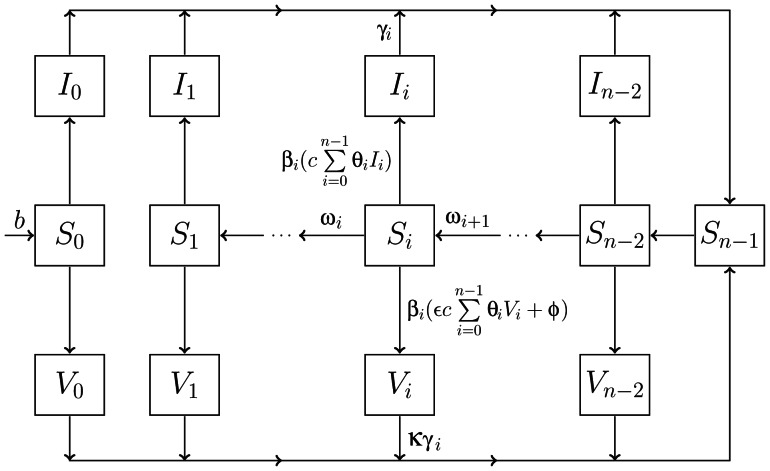Figure 1.
Graphical depiction of the transmission model without aging or vital dynamics. The model equations with vital dynamics are presented in Web Appendix 2, and aging is presented in Web Appendix 3. The I compartments correspond to the wild poliovirus (WPV)-infected population, and the V compartments correspond to the oral polio vaccine (OPV)-infected population. Each set of S, I, and V compartments is further broken down by immunity stage, i, with n total immune stages. Persons enter the population at rate b and have no immunity. The Sn−1 state corresponds to full immunity and is achieved after infection caused by either OPV or WPV. Waning of immunity occurs as the population transitions between Si compartments, at rate ωi, moving from higher immunity to lower immunity. We assume that complete loss of immunity is not possible. Levels of immunity are determined by immune stage, i, and affect susceptibility, βi; contagiousness, θi; and recovery rate, γi. Force of infection is the product of the effective contact rate (a fully infectious contact given no immunity), c, and the linear combination of the relative contagiousness, θi, of each infected subpopulation times its density. Transmission of OPV is reduced relative to WPV by decreasing the contagiousness by factor ɛ and increasing the recovery rate from infection by factor κ. Infection due to OPV can also occur because of effective vaccination rate, φ. The parameters are also explained in Table 1 and in greater detail in Web Appendix 2.

